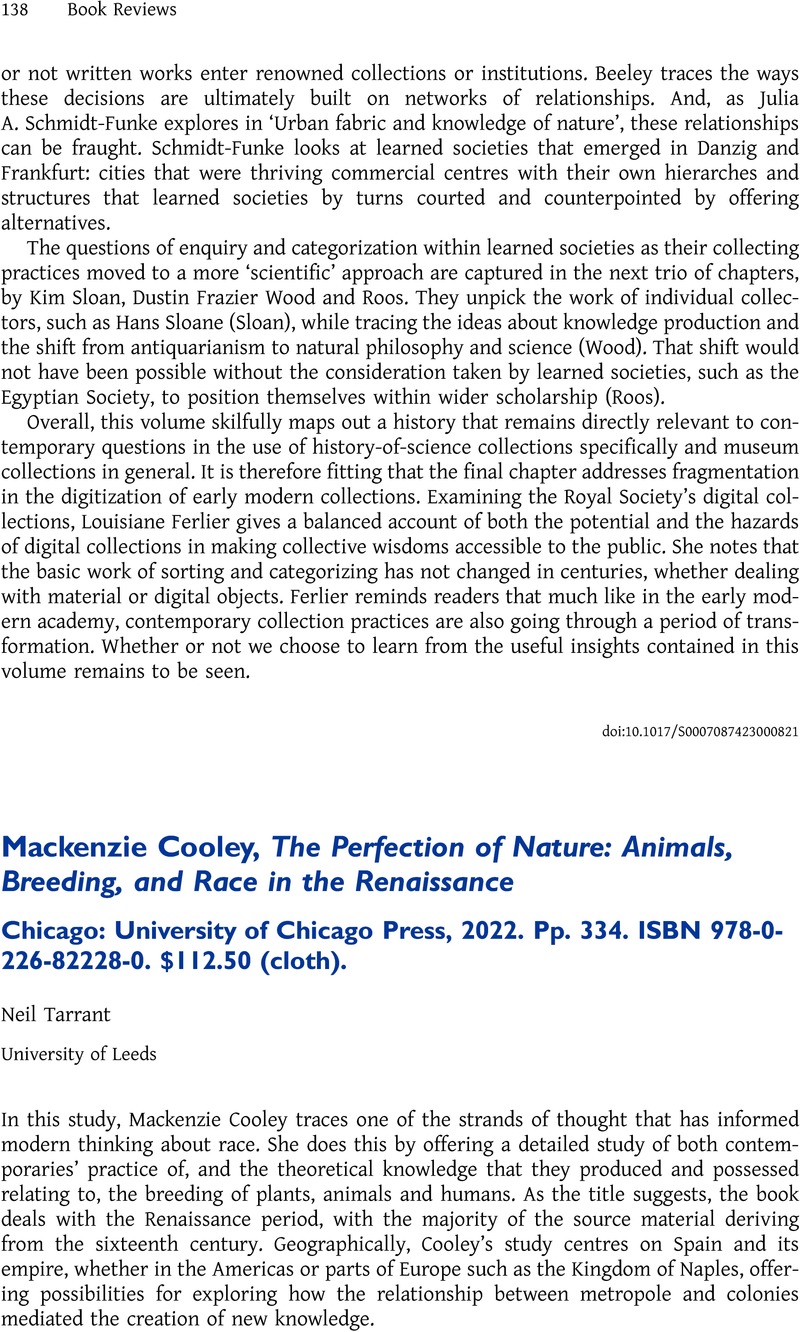No CrossRef data available.
Article contents
Mackenzie Cooley, The Perfection of Nature: Animals, Breeding, and Race in the Renaissance Chicago: University of Chicago Press, 2022. Pp. 334. ISBN 978-0-226-82228-0. $112.50 (cloth).
Review products
Mackenzie Cooley, The Perfection of Nature: Animals, Breeding, and Race in the Renaissance Chicago: University of Chicago Press, 2022. Pp. 334. ISBN 978-0-226-82228-0. $112.50 (cloth).
Published online by Cambridge University Press: 06 November 2023
Abstract
An abstract is not available for this content so a preview has been provided. Please use the Get access link above for information on how to access this content.

Information
- Type
- Book Review
- Information
- Copyright
- Copyright © The Author(s), 2023. Published by Cambridge University Press on behalf of British Society for the History of Science


